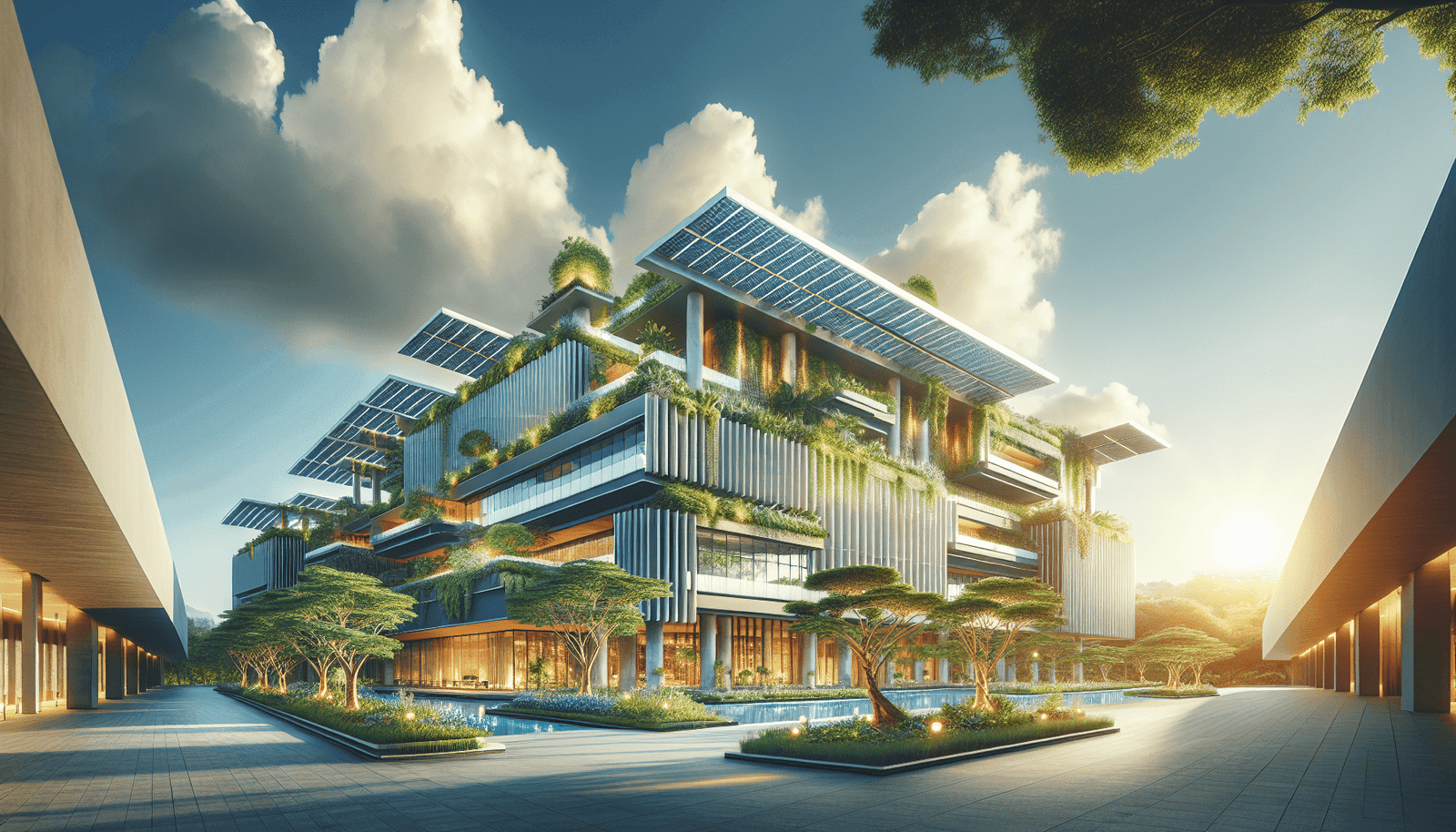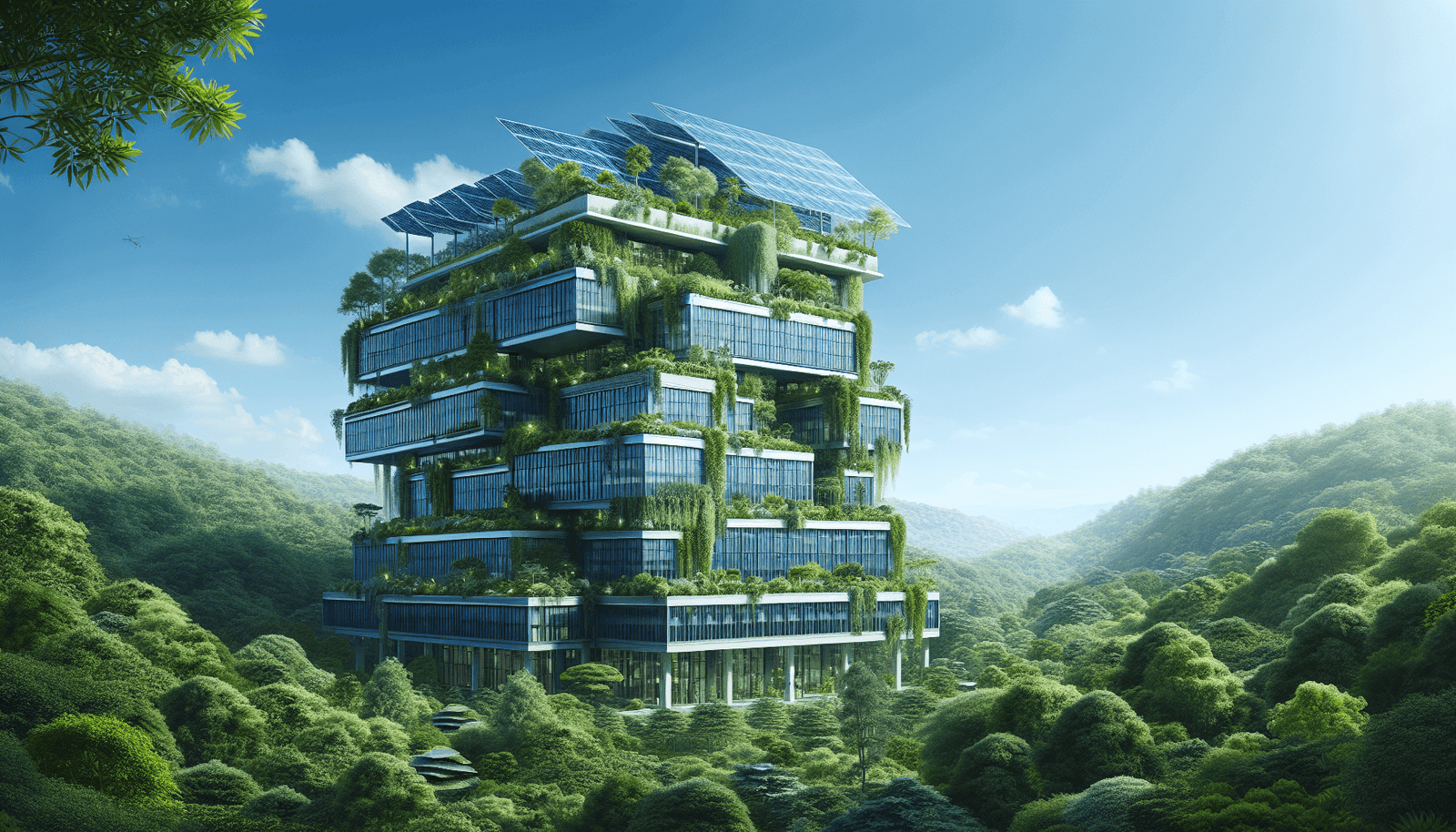Role Of LEED In Green Buildings

From AI integration to cross-platform fluency—discover the must-have technical and soft skills for today’s most in-demand dev roles.
by
Have we ever thought about what it means for a building to be “green”? As we consider the impact of construction and our built environment on our planet, terms like “sustainable,” “eco-friendly,” and “energy-efficient” come to the forefront. One key player that has risen to prominence in this conversation is LEED. Let’s take some time to understand the role of LEED in green buildings and how it influences our communities, environment, and future.
Understanding LEED
LEED, which stands for Leadership in Energy and Environmental Design, is a widely used green building certification system. Developed by the U.S. Green Building Council (USGBC), LEED provides a framework that promotes the adoption of sustainable practices in building design, construction, and operation. But how did this system come about, and what are its main goals?
The History of LEED
LEED was first introduced in 1998, and since then, it has evolved significantly. The initiative grew out of a need for a standardized approach to green building practices, providing guidance and recognition for environmentally responsible building design. Over the years, more than 100,000 projects have been certified in various categories, making LEED one of the most recognized green building rating systems worldwide.
LEED’s Primary Goals
The primary goals of LEED revolve around sustainability. This involves reducing the environmental impact of buildings, promoting efficient resource use, and enhancing the overall quality of life for occupants. We can think of the following key objectives:
- Energy Efficiency: Reducing energy consumption and promoting renewable energy sources.
- Water Efficiency: Minimizing water usage and encouraging responsible water management.
- Sustainable Materials: Promoting the use of sustainable and recycled materials in construction and operation.
- Indoor Environmental Quality: Ensuring healthy and well-ventilated spaces for occupants.
By adhering to these principles, LEED-certified buildings contribute to a healthier planet as well as healthier communities.
Categories of LEED Certification
LEED certification is available in several categories, each tailored to suit different types of projects. Let’s break down these categories to better understand their distinctions and applications.
LEED for New Construction and Major Renovations
This category focuses on the design and construction of new buildings or significant renovations of existing ones. Here, the emphasis is on sustainable site development, water savings, energy efficiency, and the selection of sustainable materials.
LEED for Existing Buildings: Operations and Maintenance
For buildings that are already constructed, this category looks at optimizing ongoing operations. This includes management practices, energy use, and water conservation strategies. It is essential for maintaining a building’s green status over time.
LEED for Commercial Interiors
This category pertains to the interior design and construction of commercial spaces. It promotes environmentally responsible decisions in interior fit-outs and renovations, covering aspects like materials, energy efficiency, and indoor air quality.
LEED for Neighborhood Development
An exciting aspect of LEED is its application at the community level. LEED for Neighborhood Development focuses on sustainable land use, connectivity, and the integration of various community spaces. It strives to create a balanced urban environment that benefits both residents and the ecosystem.
LEED for Homes
This certification focuses on single-family and multi-family residences. It aims to optimize energy efficiency, water conservation, and overall sustainability in home construction. As homeowners, we can be mindful of these factors for a more eco-friendly lifestyle.
How LEED Certification Works
Achieving LEED certification involves a detailed process that ensures a building or development meets predefined criteria. But what does this process entail?
The Points System
LEED operates on a points system, where projects earn points based on various sustainability-related criteria. The more points a project accumulates, the higher the level of certification it can achieve. The levels are:
- Certified: 40-49 points
- Silver: 50-59 points
- Gold: 60-79 points
- Platinum: 80+ points
This tiered structure encourages projects to strive for higher sustainability goals, motivating us all to raise the bar.
Documentation and Review Process
To achieve LEED certification, project teams must compile extensive documentation demonstrating how they comply with the necessary criteria. This documentation is submitted to the Green Building Certification Institute (GBCI) for review. The review process ensures that all claims made by the project team are valid and meet the LEED standards.
Importance of Energy Modeling
Energy modeling is a crucial aspect of numerous LEED categories. It involves constructing a digital representation of a building’s projected energy use to identify energy-saving opportunities. This proactive step helps us understand how design choices will impact energy performance and overall efficiency.
Benefits of LEED Certification
With an ongoing focus on sustainability, achieving LEED certification delivers several benefits for building owners, occupants, and the broader community.
Environmental Impact
LEED certified buildings have been shown to reduce their environmental footprint significantly. For example, they commonly use 25-30% less energy than standard buildings, conserve water, and limit waste through efficient practices. This contributes to a healthier ecosystem and less strain on our natural resources.
Economic Advantages
Investing in LEED certification can lead to substantial financial benefits. Reduced energy and water costs, improved occupancy rates due to higher demand for green spaces, and increased property value are just a few of the economic advantages. Over the long term, these factors can lead to significant returns on investment.
Enhanced Occupant Experience
For those of us working or living in a LEED-certified building, the benefits can be tangible. LEED certification typically emphasizes elements like improved air quality, enhanced natural lighting, and access to green spaces. All these factors contribute positively to our health, productivity, and overall well-being.
Reputation and Credibility
For companies and organizations, being associated with LEED certification enhances their reputation. It demonstrates a commitment to sustainability and social responsibility, which can differentiate a business in a competitive market. This can be especially attractive to environmentally conscious consumers and stakeholders.
Challenges of LEED Certification
While the benefits of LEED certification are impressive, there are also challenges that come with pursuing it. Recognizing these obstacles can help us find ways to address them effectively.
Cost Implications
Achieving LEED certification does involve initial expenses related to design, documentation, and certification fees. Some businesses may find the upfront costs to be a barrier, especially if they lack expertise in sustainable practices.
Complexity of Requirements
The LEED certification process can be complex and requires a deep understanding of sustainability principles. Property owners may feel overwhelmed by the documentation process or struggle to navigate the intricate criteria. Engaging with professionals who specialize in green building can help alleviate this challenge.
Evolving Standards
As sustainability science advances, LEED requirements may change. Staying up to date with evolving standards can be demanding, especially for project teams that are juggling multiple responsibilities. However, this also presents an opportunity for continuous improvement and innovation in building practices.
The Future of LEED and Green Buildings
As we look toward the future, it’s evident that the role of LEED in green buildings will only become more vital. With increasing awareness of climate change and the need for sustainable practices, LEED is likely to continue evolving.
Innovation in Building Materials
One prominent trend shaping the future of green buildings is the development of new, sustainable building materials. As these materials gain traction, LEED certification will likely integrate new categories and criteria, pushing the boundaries of what we consider sustainable design.
Community and Urban Development
Sustainable urban development is becoming increasingly important in modern society. We can anticipate a greater emphasis on LEED for Neighborhood Development projects, which can help create thriving, connected communities that prioritize environmental sustainability.
Tech Integration
Emerging technologies, such as building information modeling (BIM) and Internet of Things (IoT) devices, have the potential to revolutionize how buildings are designed, managed, and maintained. Adopting these technologies aligns with LEED’s goals, allowing us to track energy usage, ensure optimal performance, and facilitate better decision-making.
Conclusion
Understanding the role of LEED in green buildings reveals a commitment to a sustainable future that benefits us all. From energy efficiency to improved occupant experience, LEED certification sets a high standard for how we design, construct, and maintain our built environment.
As we move forward, it’s crucial for us, as stewards of our planet, to embrace sustainable practices in our own lives. By advocating for LEED-certified projects and recognizing the importance of sustainability, we can contribute to a healthier, greener world for ourselves and future generations.
By taking collective steps toward greener buildings and practices, we pave the way for a more sustainable future. Let’s continue to prioritize sustainability because, together, every step counts towards creating a healthier planet.


